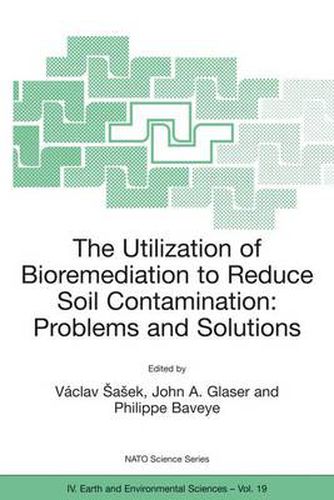Readings Newsletter
Become a Readings Member to make your shopping experience even easier.
Sign in or sign up for free!
You’re not far away from qualifying for FREE standard shipping within Australia
You’ve qualified for FREE standard shipping within Australia
The cart is loading…






This title is printed to order. This book may have been self-published. If so, we cannot guarantee the quality of the content. In the main most books will have gone through the editing process however some may not. We therefore suggest that you be aware of this before ordering this book. If in doubt check either the author or publisher’s details as we are unable to accept any returns unless they are faulty. Please contact us if you have any questions.
Since the pioneering time of the mid-1980s, the rate of adoption of in situ bioremediation strategies has been stagnating. To paraphrase Mark Twain, however, news of the demise of bioremediation may have been exaggerated; there is still a widespread belief that bioremediation remains a viable and promising technology. Among the many topics addressed in this book, three are of particular significance. The first concerns the development of suitable toxicological tests to be used in conjunction with bioremediation strategies. Traditional reliance on chemical analysis to understand the direction and extent of treatment in a bioremediation process has been found to be inadequate. Whereas the goal of bioremediation is toxicity reduction, few direct, reliable measures of this process are as yet available. Another area of intense discussion is the assessment of market forces contributing to the acceptability of bioremediation. Finally, another important component is a series of lectures and lively exchanges devoted to practical applications of different bioremediation technologies. The range of subjects covers a wide spectrum, encompassing emerging technologies as well as actual, full-scale operations. Examples discussed included landfarming, biopiling, composting, phytoremediation and mycoremediation. Each technology is explored for its utility and capability to provide desired treatment goals. Advantages and limitations of each technology are discussed. The concept of natural attenuation is also critically evaluated since in some cases where time to remediation is not a significant factor, it may be an alternative to active bioremediation operations.
$9.00 standard shipping within Australia
FREE standard shipping within Australia for orders over $100.00
Express & International shipping calculated at checkout
This title is printed to order. This book may have been self-published. If so, we cannot guarantee the quality of the content. In the main most books will have gone through the editing process however some may not. We therefore suggest that you be aware of this before ordering this book. If in doubt check either the author or publisher’s details as we are unable to accept any returns unless they are faulty. Please contact us if you have any questions.
Since the pioneering time of the mid-1980s, the rate of adoption of in situ bioremediation strategies has been stagnating. To paraphrase Mark Twain, however, news of the demise of bioremediation may have been exaggerated; there is still a widespread belief that bioremediation remains a viable and promising technology. Among the many topics addressed in this book, three are of particular significance. The first concerns the development of suitable toxicological tests to be used in conjunction with bioremediation strategies. Traditional reliance on chemical analysis to understand the direction and extent of treatment in a bioremediation process has been found to be inadequate. Whereas the goal of bioremediation is toxicity reduction, few direct, reliable measures of this process are as yet available. Another area of intense discussion is the assessment of market forces contributing to the acceptability of bioremediation. Finally, another important component is a series of lectures and lively exchanges devoted to practical applications of different bioremediation technologies. The range of subjects covers a wide spectrum, encompassing emerging technologies as well as actual, full-scale operations. Examples discussed included landfarming, biopiling, composting, phytoremediation and mycoremediation. Each technology is explored for its utility and capability to provide desired treatment goals. Advantages and limitations of each technology are discussed. The concept of natural attenuation is also critically evaluated since in some cases where time to remediation is not a significant factor, it may be an alternative to active bioremediation operations.